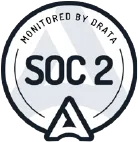Predicting the Future: Forecasting Techniques for Strategic Business Planning
When it comes to planning for the future, businesses can’t afford to rely on guesswork. Forecasting techniques provide a systematic approach to forecasting developments, analyzing hazards, and making intelligent decisions, which is where they become important. Business executives can find useful ideas to inform their plans by evaluating historical performance, market trends, and data. In the digital era, technology enhances forecast precision, enabling businesses to anticipate events more effectively. Although no approach can offer total certainty, being forward-thinking helps companies prepare for potential problems and seize growth opportunities.
This article discusses the main forecasting techniques, their advantages, and how companies can utilize them for informed decision-making.
What Are Forecasting Techniques?
Methods employed to forecast future trends depending on historical information, market research, and statistical models are referred to as forecasting techniques. These tools enable companies to lower losses, increase performance, and capitalize on fresh chances. In finance, software development, marketing, and supply chain management, forecasting is quite common.
Two main kinds of forecasting techniques exist:
Qualitative Forecasting: Depends on expert views, industry knowledge, and market studies
Quantitative Forecasting: Mathematical models, statistical analysis, and machine learning techniques are used to forecast future results.
Top Forecasting Techniques for Strategic Planning
1. Time Series Analysis
Analyzing historical data points gathered over a certain length of time is time series forecasting. Businesses can use it to spot cyclical, seasonality, and trend. Common examples are:
• Moving Averages— adjust data to highlight trends.
• Exponential smoothing uses more current observations to generate reliable forecasts.
ARIMA (Autoregressive Integrated Moving Average) is A sophisticated time-series prediction technique of statistics.
For a software firm, examining previous subscription patterns using time series forecasting helps to predict the next demand for a SaaS product.
2. Regression Analysis
To forecast, regression analysis studies the link between independent and dependent variables. Financial forecasting and demand planning often depend on it.
An e-commerce company might forecast future sales using regression analysis, considering customer engagement, promotional expenditure, and webpage traffic among other factors.
3. Machine Learning & AI-Based Forecasting
Sophisticated forecasting methods use artificial intelligence and machine learning to sift through very big amounts of information. By identifying difficult patterns, AI models like decision trees and neural networks raise prediction accuracy.
A technology company can guarantee efficient use of resources by using AI-powered forecasting of software development cycles.
4. Delphi Method
This kind of qualitative forecasting method compiles expert judgments from several rounds of surveys. Market research and technology forecasting are two typical applications of this.
For a software company introducing a fresh AI tool, the Delphi technique allows it to gather opinions from business experts on possible market demand.
5. Scenario Planning
Creating several future possibilities helps one to anticipate unknowns; this is what scenario planning is. Businesses create strategic reactions depending upon a particular technological, political, or financial environment.
A cybersecurity business could provide situations for several levels of cyber risks and draft response plans correspondingly.
Why Are Forecasting Techniques Important?
Using forecasting techniques helps businesses achieve the following benefits:
• Better resource allocation: maximizing funds, human resources, and technology expenditures.
• Risk mitigation will help us spot possible issues before they happen.
• Better Decision Making: Data-based strategic decisions.
• Competitive Advantage: Being ahead of market trends.
• More efficient: less waste of time and resources.
Implementing Forecasting Techniques in Your Business
Use forecasting powerfully by following these instructions:
1. Characterize business goals—identify what you must forecast (such as sales, market developments, and resource demands).
2. Gather Useful Data – Rely on past data, market reports, and live analytics.
3. Pick the Appropriate Forecasting Technique – Based on data availability and complexity, select a method.
4. Employ forecast tools—software based on artificial intelligence, spreadsheets, or statistical models.
5. Keep a watch on and Modify Projections—continually improve estimates in light of altering circumstances and fresh data.
Challenges in Forecasting and How to Overcome Them
Regarding businesses, although forecasting techniques offer useful knowledge, they can run into such problems as:
Data Cleanliness Problems – Make sure data is current, precise, and clean.
As market uncertainty, prepare for unplanned events using scenario planning.
Qualitative forecasting bias—balance predictions by combining expert views with numerical information.
Final Thoughts
Companies plan for the future differently once they embrace the proper forecasting techniques. From artificial intelligence-powered models to time series analysis, precise forecasting enables informed choices, lower risks, and continuous expansion. Forecasting needs to be a fundamental component of your strategic planning, whether you work in marketing, finance, or software development.
Want to improve your corporate forecasting? Start today using data-driven forecasting models and keep ahead of your sector!








